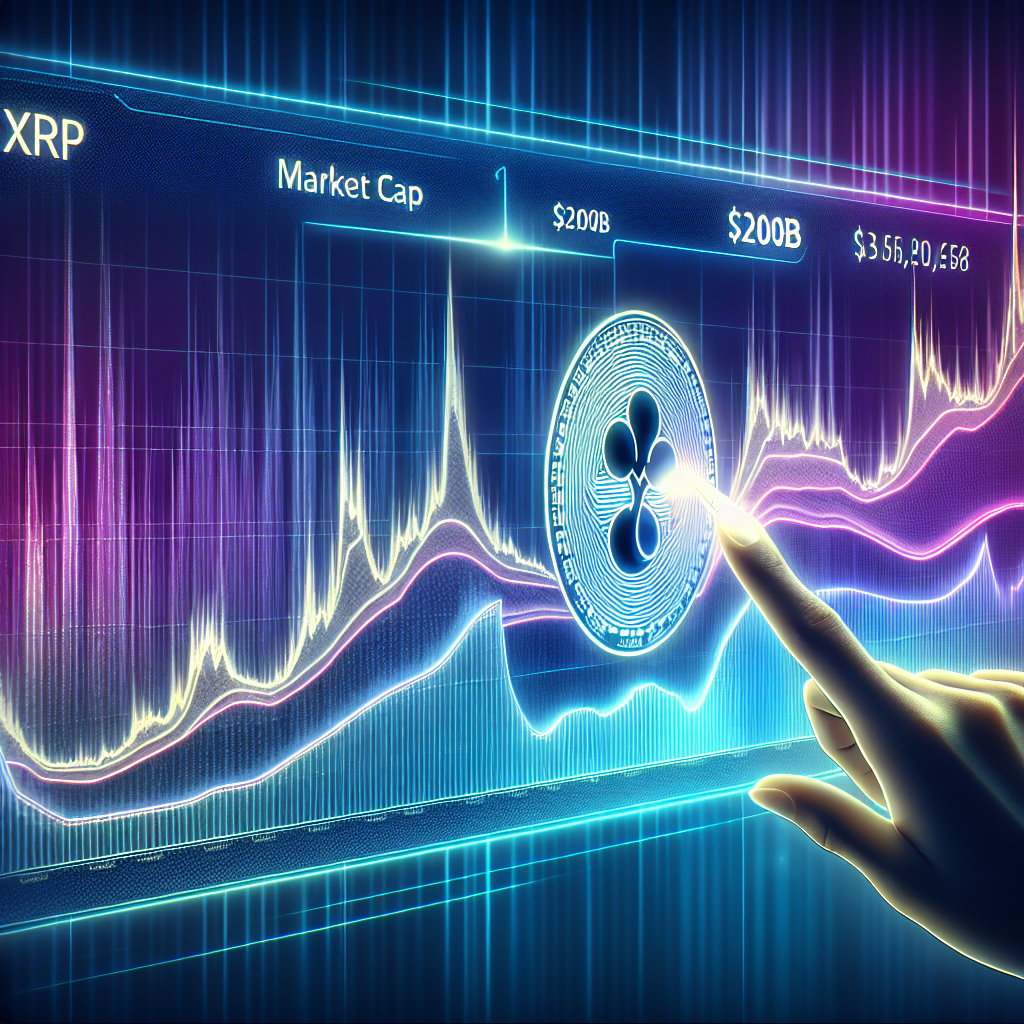FSB Prioritizes Stablecoin Role Assessment in Payment Settlements

FSB Prioritizes Stablecoin Role Assessment in Payment Settlements
[current-date] - The Federal Security Service (FSB) of Russia has recently announced a heightened focus on assessing the role of stablecoins in payment settlements, reflecting growing concerns and interest in the potential implications of these digital assets within the Russian financial system. This move underscores the increasing global attention towards stablecoins, their potential use cases, and the regulatory challenges they pose to traditional financial structures. This comprehensive analysis delves into the specifics of the FSB's initiative, recent stablecoin market developments, technical analysis of a major stablecoin, and potential trading strategies. Today's date is June 25, 2025.
FSB's Stablecoin Assessment: A Deep Dive
The FSB's decision to prioritize the assessment of stablecoin utilization in payment settlements signals a pivotal moment in Russia's approach to cryptocurrency regulation. Historically, Russia has maintained a cautious stance towards cryptocurrencies, oscillating between outright bans and tentative acceptance under strict regulatory frameworks. This latest initiative suggests a more nuanced approach, potentially aimed at understanding and mitigating the risks associated with stablecoins while exploring their potential benefits.
Several factors may be driving the FSB's increased interest in stablecoins:
- Financial Stability Concerns: Stablecoins, particularly those pegged to fiat currencies like the US dollar, have the potential to disrupt traditional banking systems and monetary policies if widely adopted. The FSB is likely evaluating the potential impact on the ruble's stability and the overall financial health of the Russian economy.- Illicit Activities: The anonymity and ease of transfer associated with stablecoins raise concerns about their potential use in money laundering, terrorist financing, and other illicit activities. The FSB's assessment likely includes measures to detect and prevent such activities.
- Geopolitical Considerations: In the context of international sanctions and geopolitical tensions, stablecoins could be seen as a tool to circumvent traditional financial channels and facilitate cross-border transactions outside the purview of Western powers. This aspect is likely a significant factor in the FSB's strategic assessment.
- Potential for Innovation: Despite the risks, stablecoins also offer potential benefits, such as faster and cheaper payment settlements, increased financial inclusion, and new opportunities for innovation in the financial sector. The FSB may be exploring ways to harness these benefits while mitigating the associated risks.
The specific details of the FSB's assessment remain undisclosed, but it is likely to involve collaboration with other government agencies, financial institutions, and technology experts. The assessment may include:
- Analyzing the volume and types of stablecoin transactions occurring within Russia.- Identifying the key players involved in the stablecoin ecosystem, including issuers, exchanges, and users.
- Evaluating the regulatory frameworks in other countries and their effectiveness in managing stablecoin risks.
- Developing recommendations for regulatory policies and enforcement measures to address the identified risks.
- Assessing the technological infrastructure needed to monitor and control stablecoin activities.
Stablecoin Market Developments: A Broader Perspective
The FSB's increased focus on stablecoins comes at a time of significant developments in the global stablecoin market. Stablecoins, designed to maintain a stable value by pegging to assets like the U.S. dollar, have recently experienced notable developments:
1. Market Capitalization Growth: As of March 2025, the total market capitalization of stablecoins reached $232 billion, a 45-fold increase since December 2019. This growth underscores their expanding role in the cryptocurrency ecosystem. (libertystreeteconomics.newyorkfed.org)
2. Regulatory Developments: The U.S. Senate's recent passage of legislation establishing a clear regulatory framework for stablecoins has bolstered investor confidence. This regulatory clarity has been a significant factor in the surge of Circle Internet's shares, the issuer of USDC, which have risen 245% since its IPO on June 4, 2025. (axios.com)
These developments highlight the dynamic nature of the stablecoin market, influenced by both market forces and regulatory actions.
Recent Developments in the Stablecoin Market:
- Circle shares surge 245% since IPO as Senate bill passage feeds stablecoin fever, Published on Friday, June 20- Stablecoins 'perform poorly' as money, central banks warn, Published on Tuesday, June 24
Several key trends are shaping the stablecoin landscape:
- Increased Adoption: Stablecoins are gaining wider acceptance as a medium of exchange, store of value, and collateral in decentralized finance (DeFi) applications. Their stability compared to other cryptocurrencies makes them attractive for everyday transactions and institutional investments.- Regulatory Scrutiny: Governments around the world are grappling with how to regulate stablecoins, with some countries considering them securities and others treating them as payment systems. The outcome of these regulatory debates will have a significant impact on the future of stablecoins.
- Central Bank Digital Currencies (CBDCs): The rise of stablecoins has spurred interest in CBDCs, which are digital currencies issued and backed by central banks. Some countries are exploring CBDCs as a potential alternative to stablecoins, while others see them as complementary technologies.
- Innovation in Stablecoin Designs: New types of stablecoins are emerging, including algorithmic stablecoins and those backed by baskets of assets. These innovative designs aim to address some of the limitations of traditional stablecoins, but they also come with their own risks.
Technical Analysis of Tether (USDT)
To illustrate the technical dynamics of a major stablecoin, let's examine Tether (USDT), the largest stablecoin by market capitalization. Despite its peg to the US dollar, USDT's price can fluctuate slightly due to market demand and supply dynamics. Understanding these fluctuations and the underlying technical patterns can be valuable for traders and investors.
Current Price and Market Overview
As of 2:57 PM PST on June 25, 2025, the price of Tether (USDT) is $1.0001. You can verify this information on https://www.binance.com/en/price/tether. This minor deviation from the $1.00 peg reflects the subtle market forces at play.
Recent Price Action
Over the past few weeks, USDT has maintained relatively stable trading within a very tight range of $0.9995 to $1.0005. However, even these minor fluctuations can be significant for high-frequency traders or those involved in arbitrage opportunities. Recent activity has been characterized by:
- Low Volatility: As expected of a stablecoin, volatility has been minimal compared to other cryptocurrencies.- Slight Premiums and Discounts: USDT has occasionally traded at a slight premium or discount depending on the exchange and market conditions. These deviations can be driven by factors such as demand for USDT in specific regions or during periods of market uncertainty.
- Stable Trading Volume: Trading volume has remained relatively consistent, indicating continued demand for USDT as a stable store of value and trading pair.
Technical Chart Patterns
Given the inherent stability of USDT, traditional chart patterns are less pronounced than in more volatile cryptocurrencies. However, analyzing short-term price movements can reveal subtle patterns:
- Sideways Channel: Over the past month, USDT has largely traded within a sideways channel between $0.9995 and $1.0005. This pattern suggests a period of consolidation and indecision, with neither buyers nor sellers able to exert significant control over the price. The break of this pattern (even a small break) could signal a slight trend change.Key Support and Resistance Levels
Identifying key support and resistance levels for USDT is crucial for understanding potential price movements:
- Support: $0.9990 - This level has acted as a strong support in recent weeks. A break below this level could indicate increased selling pressure and a potential move towards lower prices, although unlikely to be substantial.- Resistance: $1.0010 - This level has served as a minor resistance point. Overcoming this resistance could suggest renewed buying interest and a potential move towards higher prices (closer to the $1.0005 area).
Technical Indicators
Analyzing technical indicators can provide additional insights into the underlying dynamics of USDT:
- Moving Averages: - 20-day Moving Average: Currently hovering around $1.0001, suggesting a neutral short-term trend. - 50-day Moving Average: Also around $1.0000, aligning with the 20-day MA and confirming the sideways trend. - Crossovers between these averages are infrequent due to the stable nature of USDT, but any significant divergence could signal a potential shift in momentum.- Relative Strength Index (RSI): The RSI is currently around 50, indicating a neutral momentum. This aligns with the overall sideways trend and suggests that USDT is neither overbought nor oversold.
- MACD (Moving Average Convergence Divergence): The MACD line and signal line are closely intertwined around the zero line, indicating a lack of clear trend direction. A significant crossover above or below the zero line could suggest a potential trend change, but these signals are rare for USDT.
- Trading Volume: Volume has been relatively stable and consistent, indicating sustained interest and demand for USDT. Spikes in volume could coincide with periods of increased market volatility or uncertainty, as traders seek the relative safety of a stablecoin.
- Fibonacci Retracement Levels: Given the minimal price swings, Fibonacci retracement levels are less relevant for USDT. However, they could be used to identify potential support and resistance levels in the event of a more significant price movement.
Market Sentiment and Fundamental Factors
The overall market sentiment surrounding USDT is generally positive, reflecting its widespread use and acceptance as a stable store of value and trading pair. However, several fundamental factors could influence its price and stability:
- Trust in Tether Limited: Continued scrutiny regarding the reserves backing USDT could impact its credibility and price. Transparency and independent audits are crucial for maintaining market confidence.- Regulatory Developments: Regulatory actions related to stablecoins in general could impact USDT. Clear and favorable regulations could boost confidence, while restrictive regulations could dampen demand.
- Competitor Performance: The performance of other stablecoins, such as USDC and DAI, could also influence USDT's market share and price. Increased competition could lead to tighter spreads and reduced premiums or discounts.
- Broader Market Trends: Overall market sentiment in the cryptocurrency market can also indirectly affect USDT. During periods of high volatility or uncertainty, demand for USDT tends to increase as traders seek a safe haven.
Potential Trading Strategies
Given the stable nature of USDT, traditional trading strategies are less applicable. However, traders might consider the following strategies:
- Arbitrage: Exploit price differences between different exchanges. Buy USDT on exchanges where it is trading at a slight discount and sell it on exchanges where it is trading at a premium.- High-Frequency Trading: Utilize automated trading systems to capture small price fluctuations. This strategy requires sophisticated technology and a deep understanding of market microstructure.
- Hedging: Use USDT to hedge against volatility in other cryptocurrency positions. Convert a portion of your portfolio to USDT during periods of uncertainty to reduce risk.
- Yield Farming: Participate in DeFi protocols that offer rewards for providing liquidity in USDT pairs. This can generate a passive income stream, but it also carries risks related to smart contract vulnerabilities and impermanent loss.
Short-Term Price Analysis and Targets
Based on the current technical setup and market conditions, here is a short-term price analysis for USDT:
- Bullish Scenario: If USDT can break above the $1.0010 resistance level with sustained volume, it could potentially move towards $1.0015. However, this scenario is unlikely given the stablecoin's peg.- Bearish Scenario: If USDT breaks below the $0.9990 support level, it could potentially move towards $0.9985. Again, this is unlikely to be a substantial movement.
Current Price: $1.0001
Key Resistance: $1.0010
Key Support: $0.9990
Relevant YouTube Videos for Price Analysis
To further enhance your understanding of stablecoin dynamics and market analysis, here are two relevant YouTube videos from reputable sources:
Data Analyst on How to Turn Business Metrics to Insights
Data vs. Findings vs. Insights
Conclusion
The FSB's increased focus on stablecoins underscores the growing importance and complexity of these digital assets within the global financial landscape. While stablecoins offer potential benefits in terms of payment efficiency and financial inclusion, they also pose risks related to financial stability, illicit activities, and regulatory arbitrage. As governments and regulatory bodies grapple with how to manage these risks, it is essential for traders and investors to stay informed about the latest developments and conduct their own independent research.
Cryptocurrency trading, including trading in stablecoins, involves inherent risks. The price of cryptocurrencies can be highly volatile and subject to rapid and unpredictable changes. It is crucial to use appropriate risk management techniques, such as setting stop-loss orders and diversifying your portfolio. Never invest more than you can afford to lose, and always seek professional financial advice if needed.









